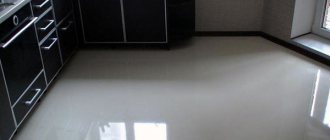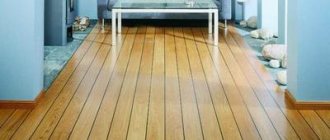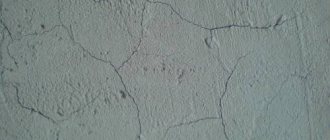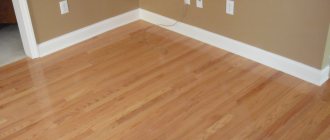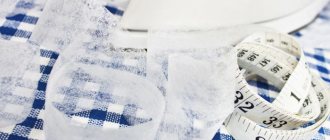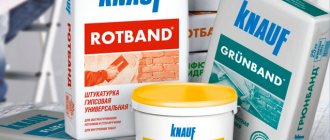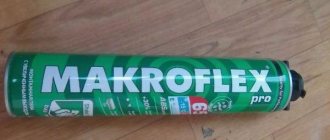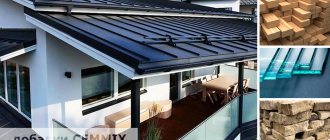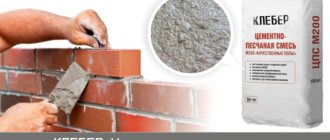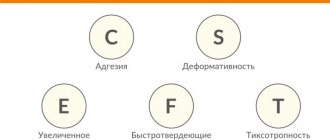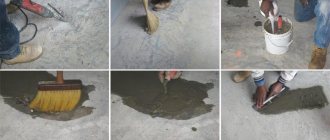If you combine PVA glue and cement, the properties of the solution improve. The material lasts longer and better resists tensile and compressive loads. In addition, the price of glue is low, so adding it to the solution will not increase the cost of the mixture. However, to ensure high quality concrete, a number of rules should be followed when mixing it.
Why is PVA in concrete?
So why add glue? It's simple, the adhesive emulsion is used as a plasticizer. Due to the absence of an unpleasant odor and any toxic additives, the solution will not emit any dangerous compounds that could harm the health of the repairman.
According to experts, adding glue increases the reliability of adhesion to the base by 3 times. Wear resistance also increases significantly, increasing by up to 50%.
The overall strength also increases by up to one and a half times. The abrasion of concrete is reduced by 1.5 - 2 times. With the addition of an aqueous vinyl acetate emulsion, a solution is obtained that has the following list of characteristics:
- strength;
- uniformity of composition;
- increased wear resistance;
- plastic.
Properties of PVA
PVA has the appearance of a white (sometimes yellowish) liquid with good adhesive properties. Capable of connecting only hygroscopic surfaces. Simply put, if they cannot be moistened with water, then this type of glue cannot cope with them.
The substance is fireproof and does not pose a threat to the respiratory tract, so even if you work with it for a long time, you do not need a mask. The emulsion can easily withstand several cycles of freezing and thawing, while its properties will be preserved.
Upon completion of the polymerization process, the composition becomes resistant to moisture, while it does not become brittle, which sets it apart from third-party adhesives.
How to properly dilute
The quality of the composition and ease of application depend on correct mixing. The volume of additives should not exceed the main substance, so professionals recommend maintaining precise proportions. Let's look at the main methods of diluting materials.
Technology for PVA
The glue breaks down when exposed to sunlight. In order not to lose properties, the connection is carried out indoors. The maximum concentration of additives is 20%. When tiling, the ratio of PVA and cement is maintained in proportions of 1 to 5, for plastering work - 1 to 3. If a mortar is prepared for screed, the proportion of adhesive varies between 5-10%.
Application of PVA in construction and repair work
PVA solutions are used by craftsmen:
- for reliable fixation of wallpaper sheets;
- as a universal adhesive mixture;
- for carrying out work related to priming prior to plastering and wallpapering (for better adhesion of materials, they can be pre-treated with an aqueous solution of polyvinyl acetate emulsion);
- as a mass added to cement and gypsum plasters (this is reasonable to do to strengthen and elasticize the building composition).
Why is PVA added to concrete?
Cement mortars are classified as mineral binders. Accordingly, they have some unsatisfactory characteristics:
- low impact resistance;
- poor adhesion to various materials;
- low elasticity (mobility);
- low abrasion resistance (over time, concrete may begin to crumble, simultaneously forming chips, dents and a large amount of dust).
Thus, cement with PVA is used to avoid the above disadvantages; it is not at all necessary to put up with them. Polymer additives have a direct effect on the chemical and physical processes of hardening (setting) of the solution, modifying the structural composition of concrete.
Astringent mineral substances combine perfectly with plasticized PVA dispersions; you don’t even have to add any additional stabilizers. In this regard, this method of strengthening concrete mixtures is available not only to professional builders, but also to amateurs who are not well versed in the principles of repair work.
What PVA glue can be used as an additive in concrete? Is it possible to use another glue?
It can be assumed that all adhesive mixtures are identical. Of course, the reality is completely different, although their smell, appearance (consistency) and properties have clear similarities. In this case, a reasonable question arises - what are their differences?
You need to note one important point - on the packaging there should not be the word glue in the name of the product (if it is, then there should also be a postscript, as in the photo below).
The fact is that the word “glue” implies the presence of other components in the solution. For example, starch (used for working with paper) or carboxymethylcellulose (for working with wood). They don't fit. In order to add a composition to cement, you need to purchase glue labeled “PVA-MB” or “PVA dispersion”.
Can I use a different glue?
Undoubtedly, the most preferable option for construction work is the use of universal PVA, which is marked MB. In this case, it is prohibited to use adhesive for household office purposes.
The following adhesive products can be used in addition to PVA when creating cement mortars:
- Latexcol;
- Inter Plast AT.
These drugs belong to specialized additives based on polymers.
Latexkol is a product made from latex. The main area of application is the creation of an adhesive composition for tiles. The product must be diluted 1 to 1 with water. It has properties absolutely identical to PVA.
The main area of application is the creation of an adhesive composition for tiles.
The inter Plast AT plasticizer consists of modified water-based surfactants. This tool allows you to significantly save on cement in the solution, while the strength and reliability of the foundation only increases.
This product allows you to significantly save on cement in the solution.
PVA glue has qualities that allow it to be used as one of the key additives to building mixtures for a variety of purposes. At the same time, this mixture, thanks to its characteristics, improves the surface, making the structure more durable for a long time.
How to properly add PVA to cement mortar? Proportions, rules and nuances. Blend recipes
So, how much pva should you add to the solution? It is important to strictly observe the proportions, otherwise the desired effect will not be achieved. They are different for different materials. For example, for floor tiles, the ratio of cement to adhesive mixture should be 5 to 1.
When making a screed, the percentage of glue in the composition should be in the range of 8-12%. How much glue do you need to add when making mortar for plaster? We need to figure it out!
The sequence of actions is as follows:
- First, sand is mixed with cement powder 3 to 1.
- The resulting mixture is poured with water, the result should be a mass with a consistency reminiscent of sour cream. Water is added initially because the glue has a viscous consistency. If you don’t add water first, you won’t be able to mix the mixture.
- Glue is added to the resulting mass. For 10 l. sand-cement mixture requires adding no more than 75 grams of glue.
- The final step is to add 200 grams of plasticizer to a ten-liter solution. Its task is to make the composition moisture resistant. This will allow it to be used in bathrooms, swimming pools, showers, etc.
PVA should be added to concrete in certain proportions:
- The standard addition is half a liter of glue for 2 small buckets of the mixture.
- In cases where it is planned to install a floor screed, you need to use: sand (200 kg); Portland cement (about 100 kg); fine crushed stone (small pebbles not exceeding 1-2 mm in size - 300 kg); alkali-resistant dyes (5 kg); adhesives (20 kg); Water (0.5 W/C).
- The cement mixture used for laying wall tiles is produced as follows: sand and powdered cement mixture are mixed in a ratio of 5 to 1. No water is added.
- If plaster is needed, you will need to get sand and Portland cement. They are mixed in a ratio of 3 to 1. Glue is poured into the resulting mass. The proportions are simple - 55-70 g of glue per 10 liters (standard tin bucket).
- If the task is to patch up concrete screeds, a mixture of cement, sand and polyvinyl acetate emulsion can help. They are mixed sequentially in proportions of 1:3:0.6. It is necessary to add 4% epoxy resin with a hardener to the resulting mixture. Then water is poured in, you should get a “sour cream” consistency.
“How much to weigh in grams?” An example of calculating the amount of PVA for plaster mortar
Let's say there is a need to plaster the walls. Room parameters: room length - 10 meters, width - 5 meters. The distance from floor to ceiling is 3 meters. You will need to apply a layer 5 cm thick.
The ratio of sand and beret cement is 4 to 1. PVA glue in the cement mortar occupies 10% of the total volume. Calculation of the area of the processed surface based on available data: 10*3*2+5*3*2=90 sq. m.
According to the tabular data, to apply a 5-centimeter layer of plaster per 1 square. m. you will need to spend 0.055 cubic meters. m. solution. You will also need 15 liters. water, which means the volume of cement used is 0.008 cubic meters. 800 milliliters of PVA will be added to the solution.
Features and Benefits
The dispersion improves the technical characteristics of the building mixture several times. Increasing the elasticity of the solution is just one of the many benefits. The material serves as a component, a component that guarantees a long service life and eliminates the possibility of shedding.
Advantages:
- The mixture, which has hardened, is characterized by increased bending strength.
- The strength of the structure is improved: the presence of glue allows it to withstand high tensile loads.
- Adhesive properties are enhanced.
- Makes it easier to apply the solution.
The popularity of the additive is explained by its non-toxicity and availability: the cost of PVA construction adhesive is several times lower than the cost of other types of construction additives with similar characteristics. The absence of toxins and specific odor are additional advantages.
Note! The use of glue is not allowed in buildings where high humidity and dampness are regularly observed. This explains the fact that glue is not recommended for use in bathhouse and swimming pool complexes.
What properties does adding PVA to the solution give to concrete?
- The use of PVA helps to reduce the radius of pores in concrete, plus they are distributed evenly over the entire area. Without additives, their average sizes are usually in the range of 0.3 to 0.5. After the above frauds, these indicators decrease by 3-4 times.
- Adhesion improves, therefore, bonding dissimilar materials together becomes much easier.
- At the molecular level, polymers form strong bonds that increase the elasticity of the composition and its resistance to cracking (both at the time of drying and over time when exposed to negative external factors).
- Floors filled with PVA are less susceptible to abrasion and less dust is generated.
- Polymer solutions take longer to dry completely. This has a beneficial effect on the final strength of the structure (both design and initial).
Cement for gluing broken whetstones
First of all, you need to thoroughly wash the broken pieces to remove dirt and grease in alkaline water. After this, the parts that should be in contact are carefully sprinkled with shellac and heated on the stove until the shellac melts and fills the pores.
Heating should be done on a smooth plate, and the flame should not touch the pieces, otherwise they may crack elsewhere. For the same reason, they should not be overheated. When the shellac has melted, the pieces are put together, pressed one on top of the other and left clamped in the clamp until the glued pieces cool.
The pieces connected in this way are so firmly glued to each other that they are not inferior to a whole whetstone.
A well-executed gluing leaves no traces.
When is adding PVA not recommended?
Although concrete adhesive can provide many improvements, using PVA is not always advisable. It is recommended not to do this when:
- Gypsum solutions are used (this is absolutely pointless);
- External work is carried out and the air temperature is below +10 degrees Celsius (the use of anti-frost additives will solve the problem);
- Repairs are carried out indoors with high humidity, for example: in the kitchen, swimming pool, sauna. However, if the finishing materials themselves are not moisture resistant, then PVA will not help. It is necessary to initially select materials that do not interact with moisture.
Additives for concrete
The amount of additives in concrete can reach 20%. Modern plasticizing additives show themselves to be more effective, while requiring lower concentrations. Such additives include Plastix. It greatly reduces labor costs when laying concrete, increasing its strength and elasticity.
Useful recommendations from professional builders. Need to:
- check the shelf life of the glue;
- strictly observe the proportions of the mixture components, guided by the table above;
- before purchasing glue, make sure that certain markings are present;
- When mixing components, take into account the operating temperature (it is desirable that the ambient temperature is not lower than +10 degrees Celsius).
